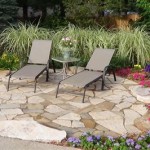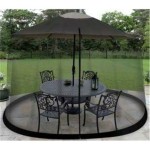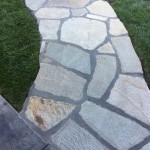The Ultimate Guide To Choosing Wood Patio Chairs
Selecting the appropriate patio chairs is crucial for creating a comfortable and aesthetically pleasing outdoor living space. Wood patio chairs offer a classic appeal, combining durability with natural beauty. However, the vast array of options available necessitates careful consideration to ensure the chosen chairs meet specific needs and preferences.
This guide provides a comprehensive overview of factors to evaluate when selecting wood patio chairs, allowing individuals to make informed decisions that result in a satisfying and long-lasting addition to their patio.
Wood Type and Its Implications
The type of wood used significantly impacts the longevity, maintenance requirements, and overall appearance of patio chairs. Different wood species possess varying levels of resistance to moisture, insects, and decay. Understanding these properties is paramount for selecting chairs suitable for the intended climate and usage.
Teak, renowned for its high oil content, is naturally resistant to water damage, rot, and insects. This makes it an excellent choice for outdoor furniture, including patio chairs. Teak requires minimal maintenance and can withstand harsh weather conditions. Over time, it develops a silver-gray patina, which many find aesthetically appealing. However, teak is a relatively expensive option.
Cedar, another popular choice, possesses natural oils that repel insects and resist decay. It is lighter than teak and offers a distinctive aroma. Cedar also tends to be more affordable than teak. Regular sealing or staining is recommended to maintain its color and protect it from the elements. Untreated cedar will eventually weather to a silver-gray color.
Acacia is a dense hardwood known for its durability and resistance to scratches and dents. It is also relatively affordable compared to teak and some other hardwoods. Acacia is generally water-resistant, but it benefits from regular sealing to prevent moisture absorption and cracking. It can range in color from light brown to reddish-brown, offering a variety of aesthetic options.
Eucalyptus is a fast-growing hardwood that is often used in outdoor furniture. It is relatively strong and resistant to decay, making it a suitable option for patio chairs. Eucalyptus is typically treated with oil to enhance its water resistance and protect it from weathering. Its color ranges from light to medium brown.
Pine, a softwood, is a more affordable option but requires greater care and maintenance. It is susceptible to rot and insect damage if not properly treated and protected. Pine furniture is typically pressure-treated to increase its resistance to the elements. Regular sealing and painting or staining are necessary to maintain its appearance and prolong its lifespan.
When considering different wood types, it's important to also check for sustainable sourcing. Look for certifications from organizations like the Forest Stewardship Council (FSC) to ensure that the wood comes from responsibly managed forests.
Construction and Design Considerations
The construction methods and design of wood patio chairs significantly impact their durability, comfort, and aesthetic appeal. Evaluating these aspects ensures the chairs are structurally sound and complement the overall patio design.
Look for chairs with mortise-and-tenon or dowel joinery, as these are generally stronger and more durable than simple screw or nail construction. Mortise-and-tenon joints involve fitting a projecting tenon into a matching mortise, creating a strong and stable connection. Dowel joints use wooden dowels to reinforce the connection between two pieces of wood.
Examine the hardware used in the construction of the chairs. Stainless steel or brass hardware is preferred, as it is resistant to rust and corrosion. Avoid chairs with cheap hardware, as it can weaken over time and lead to structural failure.
Consider the design style of the chairs and how it complements the overall aesthetic of the patio. Options range from classic Adirondack chairs to modern, minimalist designs. Adirondack chairs offer a relaxed, comfortable seating position, while other designs may prioritize a more upright posture.
Evaluate the comfort of the chairs by considering factors such as seat depth, back support, and armrest height. Some chairs may benefit from the addition of cushions for enhanced comfort. Consider whether the cushions are water-resistant and fade-resistant to withstand outdoor conditions.
Consider the chair's weight capacity. Ensure the chairs are sturdy enough to accommodate the intended users. Check the manufacturer's specifications for weight limits.
Stackable chairs offer convenient storage options when not in use. This is particularly useful for smaller patios or for storing chairs during the off-season. Folding chairs provide even greater space-saving possibilities.
Maintenance and Care Regimen
Proper maintenance is essential for preserving the beauty and extending the lifespan of wood patio chairs. The specific maintenance requirements vary depending on the type of wood and the finish applied. Implementing a regular care routine helps prevent damage from the elements and ensures the chairs remain in optimal condition.
Regular cleaning is crucial for removing dirt, debris, and mildew. Use a mild soap and water solution and a soft brush or cloth to clean the chairs. Avoid using harsh chemicals or abrasive cleaners, as they can damage the wood finish.
Inspect the chairs regularly for signs of damage, such as cracks, splinters, or loose joints. Address any issues promptly to prevent them from worsening. Tighten any loose screws or bolts.
Applying a sealant or stain helps protect the wood from moisture, UV rays, and insect damage. The frequency of application depends on the type of wood and the climate. Follow the manufacturer's instructions for applying the sealant or stain.
Store the chairs indoors or under cover during the off-season to protect them from harsh weather conditions. This helps prevent warping, cracking, and fading. If storing chairs outdoors, cover them with weatherproof covers.
For teak furniture, regular cleaning and occasional oiling can help maintain its appearance. However, many people prefer to let teak weather naturally to a silver-gray patina. In this case, minimal maintenance is required.
For painted or stained wood furniture, touch up any chips or scratches promptly to prevent moisture from penetrating the wood. Regular cleaning and periodic re-painting or staining will help maintain its appearance.
Consider using furniture covers to protect the chairs from sunlight, rain, and dirt when not in use. This simple step can significantly extend their lifespan and reduce the need for frequent cleaning.
When cleaning, avoid using pressure washers, as they can damage the wood surface. A garden hose with a gentle spray nozzle is sufficient for rinsing the chairs after cleaning.
Budget and Value Assessment
Establishing a budget is a crucial step in the selection process. Wood patio chairs vary significantly in price, depending on the type of wood, construction quality, and design. Balancing cost with desired features and durability is essential for achieving optimal value.
Compare prices from different retailers and consider purchasing during seasonal sales or promotions. Online retailers often offer competitive prices, but it's important to factor in shipping costs.
Consider the long-term cost of ownership. While less expensive chairs may seem appealing initially, they may require more frequent repairs or replacements, ultimately costing more in the long run. Investing in higher-quality chairs made from durable materials can provide better value over time.
Read customer reviews to gain insights into the quality and durability of different chairs. Pay attention to comments regarding ease of assembly, comfort, and long-term performance.
Factor in the cost of maintenance when evaluating the overall value. Some wood types require more frequent sealing or staining, which can add to the total cost of ownership.
Consider purchasing chairs in sets to save money. Many retailers offer discounts on bundled purchases.
Evaluate the warranty offered by the manufacturer. A longer warranty period provides greater peace of mind and indicates the manufacturer's confidence in the quality of their product.
Consider the resale value of the chairs. High-quality wood patio chairs can retain their value over time, making them a worthwhile investment.
Balancing initial cost with long-term durability, maintenance requirements, and aesthetic appeal is key to making a financially sound decision.

How To Choose The Best Wood For Patio Furniture

Patio Furniture Buyer S Guide All You Need To Know

Patio Furniture Buyer S Guide All You Need To Know

8 Keys To The Perfect Patio Furniture Arrangement

How To Choose The Best Material For Outdoor Furniture

How To Choose The Best Material For Outdoor Furniture

Expert Tips Cast Aluminum Patio Furniture Repair Maintenance Hauser S

The Best Oil For Outdoor Furniture Real Milk Paint Co

Your Ultimate Guide The 10 Best Places To Buy Outdoor Furniture

Your Ultimate Guide To Selecting A Backyard Grill Sonoma
Related Posts








